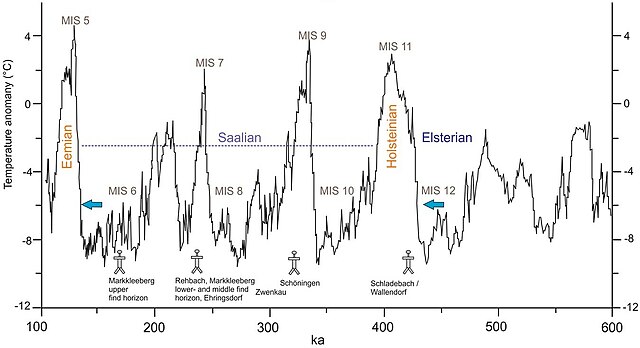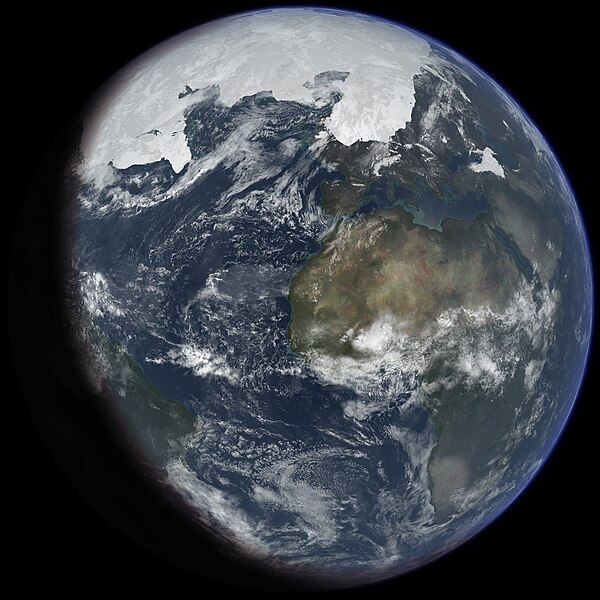Penultimate Glacial Period
The Penultimate Glacial Period (PGP) is the glacial period that occurred before the Last Glacial Period. The penultimate glacial period is officially unnamed just like the Last Glacial Period. The PGP lasted from ~194,000 years ago, to ~135,000 years ago, and was succeed by the Last Interglacial. The PGP also occurred during Marine Isotope Stage 6 (MIS6). At the glacial ages’ height, it is known to be the most extensive expansion of glaciers in the last 400,000 years over Eurasia, and could be the second or third coolest glacial period over the last 1,000,000 years, as shown by ice cores. Due to this, the global sea level dropped to between 92 and 150 metres below modern-day global mean sea level. The penultimate glacial period expanded ice sheets and shifted temperature zones worldwide, which had a variety of effects on the world's environment, and the organisms that lived in it. At its height, the penultimate glacial period was a more severe glaciation than the Last Glacial Maximum. The PGP covers the last period of the Saalian glaciation in Europe, called the Wolstonian Stage in Britain, and is equivalent to the Illinoian in North America.

Diagram of glacial cycles, with the Penultimate Glacial Period labelled as MIS 6.
The Last Glacial Period (LGP), also known colloquially as the Last Ice Age or simply Ice Age, occurred from the end of the Last Interglacial to the end of the Younger Dryas, encompassing the period c. 115,000 – c. 11,700 years ago.
The Last Glacial Period caused a much lower global sea level
An artist's impression of the last glacial period at glacial maximum



